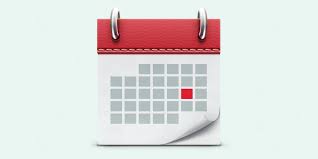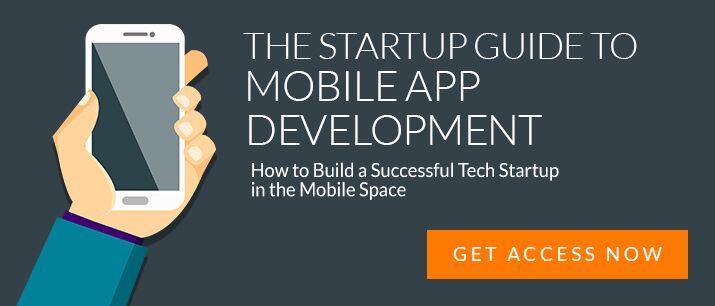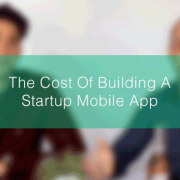The Lightweight Startup Plan
Building a business from the ground up can be a daunting task.
Often app developers experience paralysis when launching their app or scaling their startup, simply because there is so much to be done that they don’t know where to begin.
A startup business plan is a document that outlines your startup’s mission and the steps to getting there.
It aligns goals with the tasks to achieve them, problems with the ideas to solve them, and products with the markets that want them.
The key to growing your startup is using this plan as your bible, constantly referring to it and updating it.
At Buzinga we help our clients develop logical, workable and effective action plans for getting their startups off to a fast start.
I often hear conflicting advice on what this bible should look like – Some experts advocate for including everything, while others say that with enough research your plan only needs to be 1 paragraph.
Ultimately, it isn’t the structure of the plan that makes it, but what is contained inside it.
That being said, you also don’t want to miss a crucial aspect of planning due to poor structure.
I’ve outlined the 7 most important sections you should definitely include in your startup plan, then you can flesh out these sections in whatever way you like.
1. Set Big Hairy Audacious Goals (BHAGs)
Source: Longtermcareleader
You won’t see these in a traditional business plan, but I’m a huge believer in the power of goals.
Aside from having a hilarious name, BHAGs are important to refer to throughout your startup’s life.
As your startup develops into a fully-fledged and profitable business, you will have to make some tough decisions.
That’s where BHAGs come in. These goals help you keep an eye on the big picture – your business’ ‘reason for being’. They will guide you in all your major business decisions to work towards your ultimate goals.
Here are the steps to creating BHAGs:
A) Brainstorm
These are long term goals you want to achieve in a minimum of 10 years. Be bold, be brave and get excited when brainstorming.
The great thing about setting BHAGs is that it’s one of the few times in your startup’s life where you’re allowed to be unrealistic and overly ambitious.
Forget about any restrictions, doubts or resource limitations and let you’re imagination run wild.
This goal should change your life.
Do you want to expand and have a presence in every continent?
Do you want to be acquired by Microsoft or Google?
Do you want to revolutionize an industry and completely eliminate a market incumbent?
The possibilities are endless. Here are someone real-life examples:
- Become a $125 billion company by year 2000. (Wal-Mart, 1990s)
- Become the dominant player in commercial aircraft and bring the world into the jet age. (Boeing, 1950s)
- Become number one or two in every market we serve and revolutionize this company to have the strengths of a big company combined with the leanness and agility of a small company (General Electric, 1980s)
- Become the Harvard of the West (Stanford University, 1940s)
There are only a few rules for conceptualizing BHAGs. They should be:
- action-oriented
- Inspire a long term vision
- Innovative enough to require you to be constantly out of your comfort zone in order to achieve it
B) Test
You should now have a list of seemingly ridiculous and unattainable goals to dedicate the next 10-30 years of your life to making happen.
Trim the fat by asking yourself the following questions:
- Does it excite you?
- Is it measurable? How will you know if you’ve achieved it?
- Can people immediately understand it?
This step is basically a feasability assessment for your startup’s mission.
But instead of stats, a meaty BHAG will inspire you and your team to achieve them.
C) Commit
There’s no point setting goals that you don’t commit to.
Break down your BHAG into small, digestible chunks so you can easily check in with its progress.
Set mini goals for 1 year, 5 years and 10 years.
These will keep you motivated to reach the BHAGs without feeling overwhelmed at the sheer sight of it.
Set reminders every couple of months to assess where you are on your path to achieving your goal, and perhaps what you need to change in order to get there.
2. Outline your team
Source: Marketing Decisions
These aren’t just the people involved in the day-to-day running of the joint.
Include all mentors, advisors and investors you have.
If you don’t have a business partner, it’s a good idea to get one. There are very few startup success stories with only one founder, and investors know this.
Your business partner should ideally complement your own skills (or rather, the skills you lack).
If you’re the ideas person, you need someone with some business and finance sav. Likewise, if you’re a developer nerd, your business partner should have some sales charm.
If you can show in your plan that your team has a hugely diverse range of skills, you’ll be able to convince people you can handle anything.
3. Identify the problem
Source: Mindomo
Knowing the problem you’re trying to solve is a crucial first step in developing your app idea.
At Buzinga, we have a lot of clients come to us with ideas for features and functions first, without having a clear idea of what the whole point of their app is.
Let me be clear though: You don’t necessarily have to be solving a problem that no one else has yet solved.
Some of the most successful companies in the world were once startups that took an existing ‘solution’ to a problem and streamlined it, added features or made it cheaper.
Google wasn’t the first search engine on the market, but it did realise that existing search engines could be improved.
It’s important that you know not just WHAT the problem is, but WHO has the problem, and HOW you will go about solving it better than any competitor.
If you can’t communicate this is 1 or 2 sentences, it’s time to step back and do some more research on customer pain points.
4. Suss out the market
Source: Elegant Themes
I know I called this article ‘The Lightweight Startup Plan’, but ideally this section should be pretty meaty.
This is where the bulk of your research is going towards.
Entrepreneurs will often find after doing market research that their app idea needs some tweaking or a total overhaul.
In order to penetrate a market and truly disrupt, you need to get intimate with your competitors, customers, and have an idea of where the industry itself is heading in the next decade at least.
From an investor’s point of view, this section is a huge pointer in getting funding.
This section should include
- Competitor analysis – how many competitors are there in your market? Who are they? What are their strengths and weaknesses? What are their strategies? Here’s some great templates by Sherpablog to get you started.
- Customer segmentation – Segment users based on demographics (age, gender, location, etc), psychographics (lifestyles, values, attitudes) and behavioural characteristics (heavy app users, average, etc)
- Industry barriers to entry – including any government regulations, legal requirements and existing monopolies/duopolies
Investors are number hungry, so any data you have (whether it be from self-administered surveys, online databases or government reports) will be well received.
5. Pitch your product
Source: Unsplash
NOW you get to the fun stuff. Features, functions and what your app is going to look like.
Chuck in anything you have to make this section visual. Wireframes, screenshots, mock ups, whatever you’ve got.
This will help you get noticed by investors even if you don’t have a prototype.
Here are some other things you might like to include:
- A timeline for product creation, with milestones
- Any future updates or features for version 2, 3, and more…
- Any potential add-ons you can up-sell to increase average customer spend
6. Figure out how to make money
Source: MikkoJarrah
Everyone’s least favourite topic.
Don’t stress – It isn’t a bad thing if you don’t have your revenue model all figured out from the get go.
I often find that if the client hasn’t even thought about making money it’s because they’re so excited and driven to develop their app idea that it’s truly going to disrupt their industry.
And these are pretty inspiring people to work with!
That being said, you should at least have a general idea what monetisation method you’ll be using, and then you can worry about tweaking it down the road.
There are several monetisation strategies for apps out there now. Check out these articles to decide which one is right for you:
- How Mobile App Developers Make Money From Free Apps
- How To Turn Your App Idea Into A Money Making Machine
Trust me, your revenue model will definitely change as your startup grows and you develop new partnerships.
Be flexible to setbacks and opportunities in the future.
7. Create a detailed quarterly plan
Source: Easy Book
Create a document which details your goals, tasks to be completed to achieve it, person assigned to, and deadlines for each task.
As an example, here is one of Buzinga‘s quarterly sales goals from a few years ago:
Increase life time value, conversion rate and customer expectations
These were some of the tasks we created to break it down
- Identify key customer characteristics
- Define sales-qualifying criteria based on customer characteristics
- Implement and train staff on new criteria
- Produce weekly marketing report
- Refine sales script
Each task had a deadline for which someone was accountable.
That’s a big part of making sure stuff gets done – even if you’re the boss, make sure you have someone close by to keep you accountable for your promises and goals.
Because once you start putting off the tasks that need to get done to achieve quarterly goals, it’s a slippery slope.
Before you know it, you’ll be behind on your yearly goal, 5 year goal, and BHAG.
Anyone can have a great idea.
It’s the planning and the dedication behind it that builds great businesses.
I hope this gives you a clear structure to jump in to your startup planning head first!
Latest posts by Logan Merrick (see all)
- Ep 18: Collective Campus’ CEO on Intrapreneurship and Corporate Innovation - December 20, 2016
- 50 User Engagement Strategies For Planning Memorable Mobile Experiences - December 19, 2016
- Latest Data: App Monetisation Trends And Drivers 2015-2020 - November 25, 2016













